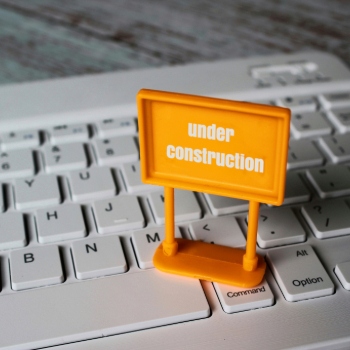FAQ
Due Diligence – FAQs
The Comprehensive Environmental Response, Compensation, and Liability Act (CERCLA) is a federal law that addresses the cleanup of hazardous substance releases. It also establishes liability for potentially responsible parties (PRPs).
Superfund is the program created under CERCLA to clean up contaminated sites. It is managed by the U.S. Environmental Protection Agency (EPA) and funded through government resources and responsible parties.
AAI is the process of evaluating a property’s environmental conditions before acquisition. It establishes the level of due diligence needed to qualify for liability protections under CERCLA.
The innocent landowner defense protects property owners from CERCLA liability if they conducted AAI and were unaware of contamination at the time of purchase.
PRPs include current property owners, past property owners at the time of contamination, parties who arranged for disposal, and transporters of hazardous substances.
Phase I Environmental Site Assessment (ESA) – FAQs
A Phase I ESA is a comprehensive evaluation of a property’s historical uses, regulatory records, and visual conditions to identify potential environmental concerns.
It helps buyers, lenders, and investors avoid unexpected cleanup costs and provides liability protection under federal laws like CERCLA.
It is typically performed during property transactions, refinancing, or prior to redevelopment to ensure the property is free from major environmental concerns.
An Environmental Professional (EP) with the necessary qualifications and experience in site assessments as defined by ASTM E1527-21 standards.
RECs are indications of current or past releases of hazardous substances or petroleum that may pose risks to human health or the environment.
Most Phase I ESAs are completed within 2–3 weeks, though timelines can vary based on property size and information availability.
They follow ASTM E1527-21, which meets the EPA’s All Appropriate Inquiry requirements for due diligence.
A Phase II ESA may be recommended to investigate further using sampling and laboratory testing to confirm or rule out contamination.
No. It involves a site visit, records review, and interviews but does not include intrusive testing.
They are commonly done for commercial, industrial, multifamily residential, and sometimes vacant land prior to development or sale.
Yes, when conducted properly, it can help qualify for CERCLA defenses such as the innocent landowner defense.
It is valid for up to 180 days under ASTM standards, after which certain components may need updating.
Yes, especially when they were formerly used for commercial or industrial purposes or are part of a large multifamily development.
Pricing typically ranges from $1,800 to $3,500 depending on the property’s size, location, and complexity.
Phase II Environmental Site Assessment – FAQs
A Phase II ESA involves collecting soil, groundwater, or vapor samples to confirm or rule out contamination identified during a Phase I ESA.
It is conducted when a Phase I ESA identifies Recognized Environmental Conditions or other evidence suggesting possible contamination.
It involves subsurface investigations, laboratory analysis of samples, and detailed reporting of findings.
Typically, the buyer or property owner pays for it, though sometimes lenders or sellers may contribute.
The process generally takes 3–6 weeks depending on the complexity of sampling and laboratory turnaround times.
Common tests include petroleum hydrocarbons, volatile organic compounds (VOCs), heavy metals, PCBs, and site-specific contaminants.
No. It only identifies contamination. Any cleanup would require a Phase III ESA or separate remediation plan.
Sampling points are determined based on Phase I findings, site history, and regulatory guidance.
The next steps may include further delineation of the contamination and the development of a remediation strategy.
Costs can range from $5,000 to $25,000+ depending on sampling scope, property size, and lab testing requirements.
Not always, but lenders, regulatory agencies, or buyers may require them to evaluate environmental risks before a transaction.
Yes. Contamination may lower value, impact redevelopment plans, or require additional negotiations during the transaction.
Federal, state, and local agencies may set requirements depending on the nature and location of the property.
Results are compared to regulatory screening levels to assess whether contaminants exceed safe thresholds.
In some cases, if contamination is confirmed and the client agrees, a remediation plan can begin right away.
Property Condition Assessments (PCA) – FAQs
A PCA evaluates the physical condition of a building, identifying deficiencies and estimating repair costs.
It helps investors, lenders, and buyers understand the financial risks of owning or redeveloping a property.
Site inspection, building systems evaluation, deferred maintenance review, and cost estimates.
Typically 1–2 weeks for most properties.
ASTM E2018-15 is the industry standard for PCAs.
Lenders, investors, buyers, and property owners.
Basic observations are included, but detailed structural engineering requires a separate study.
Yes. Many clients order them together during due diligence.
Generally $2,000–$8,000 depending on property size and complexity.
Yes. Reports include immediate repairs and long-term capital needs.
Wetland Delineation & Permitting – FAQs
It’s the process of identifying and mapping wetlands using vegetation, soils, and hydrology indicators.
It ensures compliance with Section 404 of the Clean Water Act and avoids regulatory penalties.
The U.S. Army Corps of Engineers (USACE) and state/local agencies.
Before land development, construction, or major site alterations.
Anywhere from a few weeks to months, depending on jurisdiction and complexity.
Only with permits and mitigation plans approved by regulatory agencies.
ADA Assessments – FAQs
It evaluates whether a property complies with the Americans with Disabilities Act (ADA) standards.
Owners of commercial properties, public facilities, and multifamily housing.
Inspections of parking, entrances, restrooms, pathways, and other accessible features.
To avoid lawsuits, penalties, and ensure accessibility for all users.
News & Update


Quick Links
Services
Contact Info
Copyright © 2025. All rights reserved.

